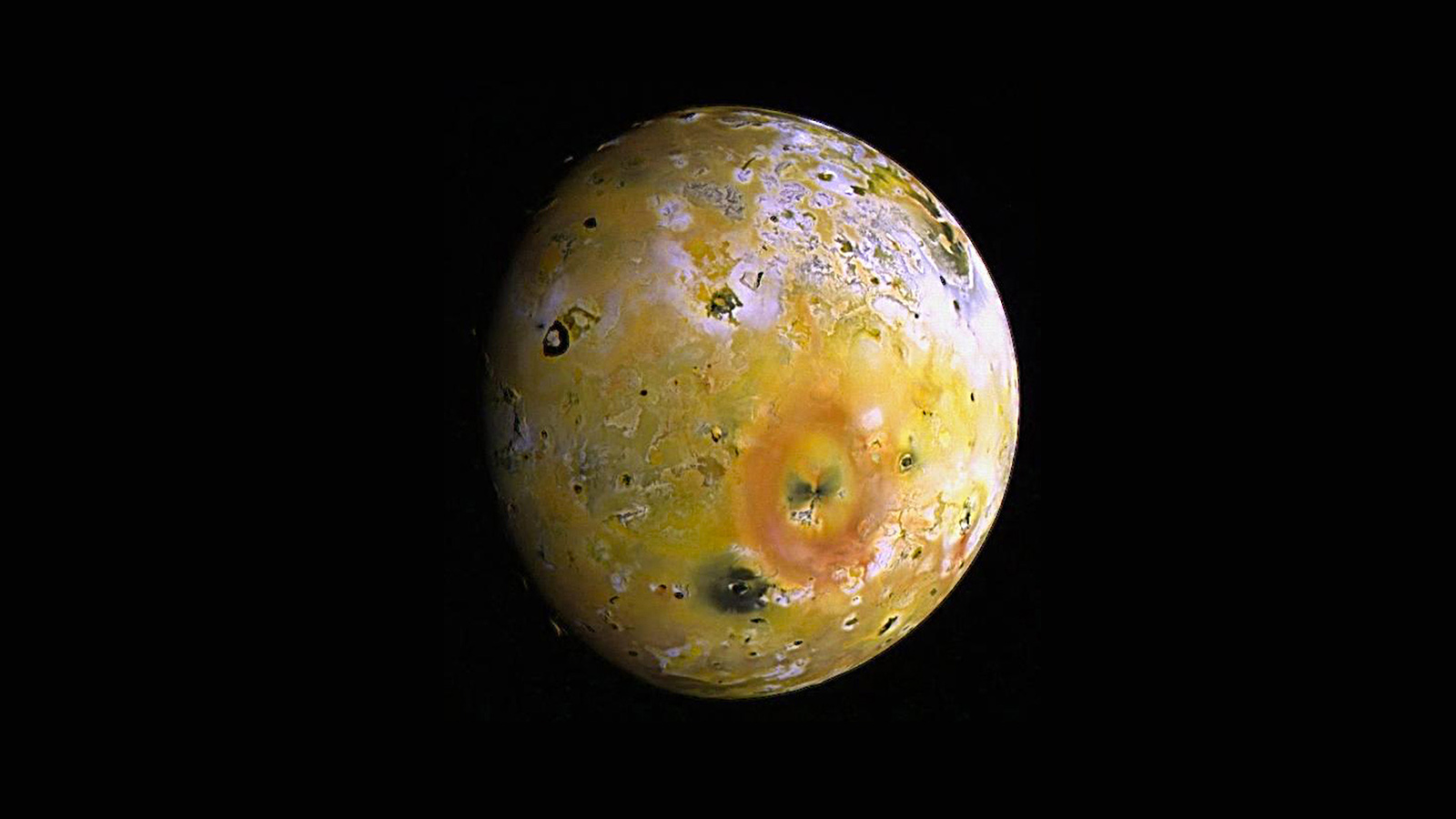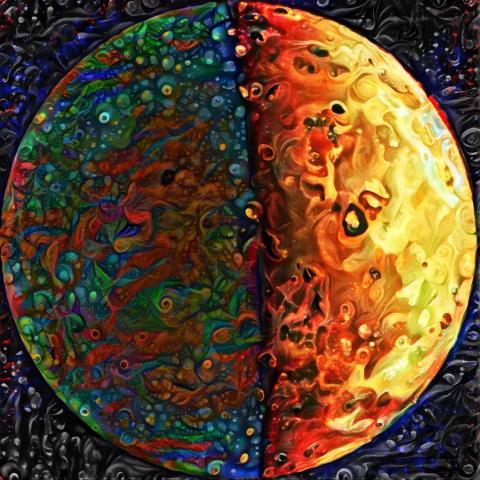Jupiter's violent moon Io has been the solar system's most volcanic body for around 4.5 billion years
"Io represented a big mystery because its surface doesn't hold a record of its history the way that the surfaces of less active moons do."

The solar system's most volcanic body, the Jupiter moon Io, has been in turmoil for at least 4.57 billion years, right back to its birth and the infancy of the sun.
Those are the findings of a team of scientists who examined Io with the Atacama Large Millimeter/submillimeter Array (ALMA) to track sulfur and chlorine in the Jovian moon's atmosphere.
Scientists have understood that the gravitational tug-of-war between Jupiter and the neighboring Jovian moons Europa and Ganymede generates immense tidal forces within Io that cause its intense volcanism. What wasn't clear until now was just how long the influence of Jupiter and its moons had been wreaking havoc on Io. That's because the constant flow of lava from the extreme volcanism across its surface keeps this moon looking fresh.
Related: NASA's Juno probe sees active volcanic eruptions on Jupiter's volcanic moon Io (images)
"Io's surface is very 'young,' meaning that the lava flows and volcanic plume deposits cover up any features that are more than around 1 million years old," Katherine de Kleer, team leader and assistant professor of planetary science and astronomy at Caltech, told Space.com. "Therefore, it has not previously been possible to learn anything about Io's volcanic history beyond the past million years, which is very recent from a geological perspective.
"Io represented a big mystery because its surface doesn't hold a record of its history the way that the surfaces of less active moons do."
Io's atmosphere can't hide the age of its volcanism
The extreme volcanism of Io depends on the precise arrangement of the three moons and the rhythmic gravitational dance in which they orbit Jupiter.
Breaking space news, the latest updates on rocket launches, skywatching events and more!
"Io is in an orbital resonance with Europa and Ganymede, meaning that their orbital periods are integer multiples of one another," de Kleer said. "For every four orbits of Io, there are exactly two orbits of Europa and one orbit of Ganymede. This means that the moons' gravitational effects on one another are at the same place every orbit, tweaking the orbits from circles into ellipses."
She added that once these moons are in ellipses, their distance from Jupiter changes as they go around, so they experience changing gravity from Jupiter. The changing amount of Jupiter's gravity felt by Io results in rock tides on the moon, and Io's shape is compressed and stretched out every orbit, which lasts only 1.8 Earth days. This generates friction in the moon's mantle, which produces enough heat to melt rock.
The gravitational push and pull of Jupiter, Europa, and Ganymede on Io generate tidal forces so intense that they can cause the surface of the moon to rise and fall by heights as great as 330 feet (100 meters). That is equivalent to the surface of Earth in New York suddenly jumping up above the top of the Statue of Liberty.
The big question is: Has this been happening for as long as these moons have existed?
"Computer simulations published over the past 20 years have shown that Io, Europa, and Ganymede could have been captured into their current resonant orbital configuration right as they are forming," de Kleer continued. "This resonance is what ultimately causes the volcanism. Therefore, it makes sense that if the moons were in this configuration from the time of their formation, Io would have been volcanic for that same time period."
With scientists unable to glean information about how long Io has been highly volcanic, de Kleer and colleagues used ALMA, an array of 66 radio antennas in the Atacama Desert of northern Chile, to hunt for clues in its thin atmosphere.
In particular, they looked for stable isotopic radios of sulfur and chlorine-bearing molecules. The team found that both elements are more present in heavy isotope variants — atoms with higher numbers of neutrons — compared to the average value found across the solar system that occurs as the result of lighter isotopes from other world's upper atmospheres.
On Io, volcanism causes the material to be continuously recycled between the moon's interior and its atmosphere, and de Kleer and crew found as a result of this, the Jovian moon has lost as much as 94% to 96% of its lighter sulfur isotopes. This is something that would have only been possible in the face of billions of years of volcanism going right back to the birth of Io.
"We used sulfur isotopes in Io's atmosphere to deduce that Io has been producing sulfur-rich gas — and, therefore, that it has been volcanically active — for billions of years," de Kleer said. "This is a nice confirmation of some prior predictions that have been made."
For de Kleer, the results represent a long-term fascination with Io providing answers to nagging questions.
"I have been fascinated by the question of Io's long-term evolution for as long as I have studied Io," she said. "I'm interested not just in how planets and moons are today, but how they got to be the way they are."
And the Caltech professor isn't done with Io yet, either. After answering questions about the Jovian moon's fiery nature, she wants to know if it ever had a cooler aspect, and if so, if this previous incarnation was destroyed by the satellite's volcanism.
"As for what is next, I'd love to know whether Io once had a water ocean and ice crust, as its neighbors Europa and Ganymede do, that was subsequently lost by volcanism or some other means," de Kleer concluded.
The team's research was published on Thursday (April 18) in the journal Science.

Robert Lea is a science journalist in the U.K. whose articles have been published in Physics World, New Scientist, Astronomy Magazine, All About Space, Newsweek and ZME Science. He also writes about science communication for Elsevier and the European Journal of Physics. Rob holds a bachelor of science degree in physics and astronomy from the U.K.’s Open University. Follow him on Twitter @sciencef1rst.


